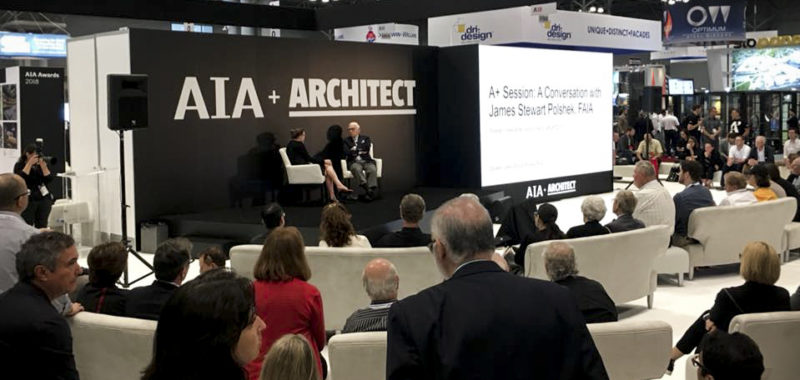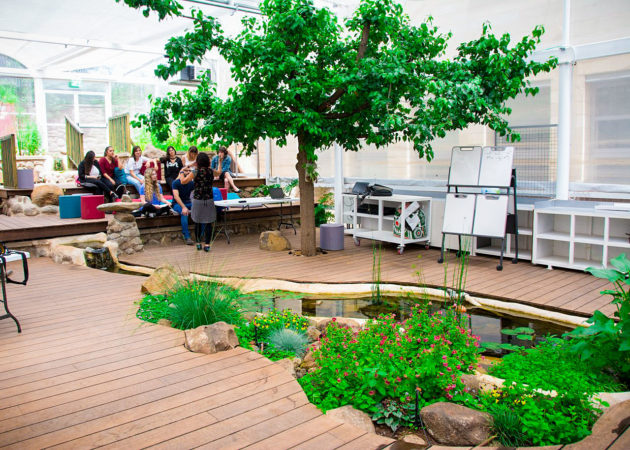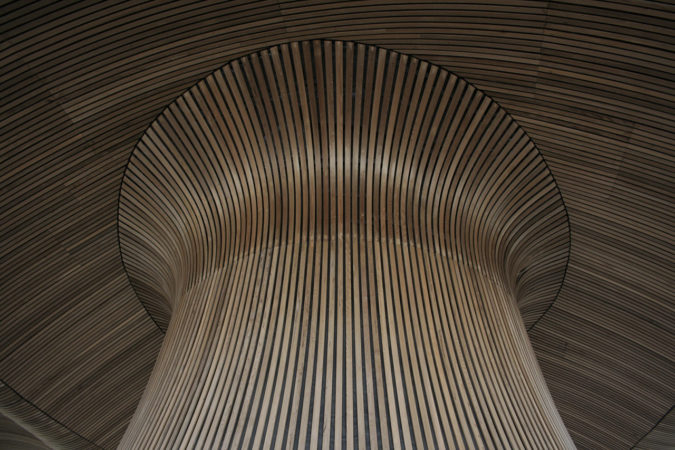
Every year, AIA presents revolutionary products and ideas that offer a whole new palette of design possibility. And this year we couldn’t be more excited to see how architects and designers take these new products and ideas, push the boundaries of the built environment and transform the spaces in which we live, work, and play into experiences of inspiration and joy.
We’re so excited, in fact, that we tapped industry trend expert and Stoner Bunting PR lead Emily Shuler, who provides A&D editors with the latest know-how in all things building products, to get her predictions on what key industry trends we’ll see on the showroom floor and in the keynotes at AIA 2019.
So, what trends should we expect?
Shuler says three specific design areas, all stemming from sustainability, will get the spotlight. Here’s a quick rundown. (And check back after AIA 2019 to see if she’s on the money).
Biophilic Design

Our need to commune with nature is intrinsic. And yet, we now spend about 90 percent of our lives indoors, where natural elements are lacking.
Enter biophilic design, which marries our ancestral biological inheritance with the realities of our modern existence.
Studies show that nature within the built environment improves human health and productivity. So it’s important for our inside spaces to feel more like natural surroundings than a box. Productivity magnifies when occupants feel that their working environment feels whole and integrated, which is exactly what biophilic design offers.
But according to Shuler, biophilic design is more than bringing the nature indoors. An environment needs to feel wholistic and integrated, not isolated, in order to be considered biophilic. In order to make a space biophilic, every material choice and design element needs to be thought of within the space, not just by itself.
Integrating Wood into Design

The look and feel of natural wood are a huge part of biophilic design and can completely transform an environment. With offices, corporate and commercial spaces traditionally being known as cold and boring with a lot of white and basic building products, people can bring a natural ambiance into a space through the natural look of wood.
Shuler says that as open office design continues to keep its hold and hospitality design elements begin to penetrate other design sectors, wood is the perfect way to feed into biophilic design and add warmth to a space. Architects want to create spaces people want to be in — and a natural wood look brings comfort and a sense of identity to a space to evoke emotion.
The challenge of this high desire for wood is sourcing. However, products that offer the look of wood but made of different material achieve the same beautiful design without having as much of a negative environmental impact.
Protection from Future Threats with Resilient Products 
As our climate continues to change and warm, extreme weather events have increased. Over the last 50 years, most of the U.S has seen increases in heavy downpours, severe floods, tornados and extreme wind. A higher sea surface temperature in the Atlantic Ocean has dramatically increased the number and power of hurricanes.
Because of these changes, Shuler says it’s necessary for architects to implement resilient design to ensure a long life of their building as well as the safety of all occupants. Architects have a responsibility to create a built environment that will keep us safe today as well as anticipate future threats through the right specified products.
Shuler and the Stoner Bunting PR team will be soaking in information while connecting with editors and architects at AIA 2019. Follow along via our Instagram and Facebook page to find out if Shuler hits the nail on the head!
